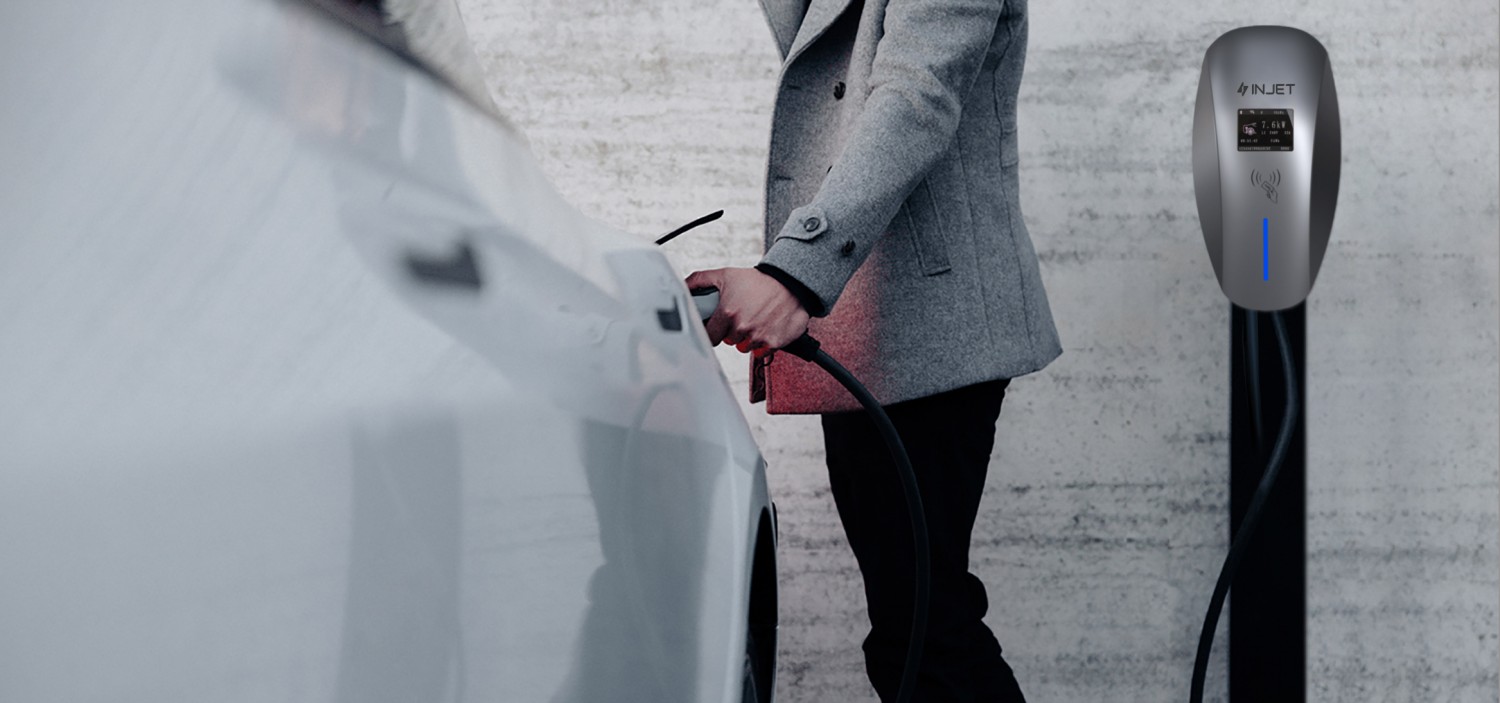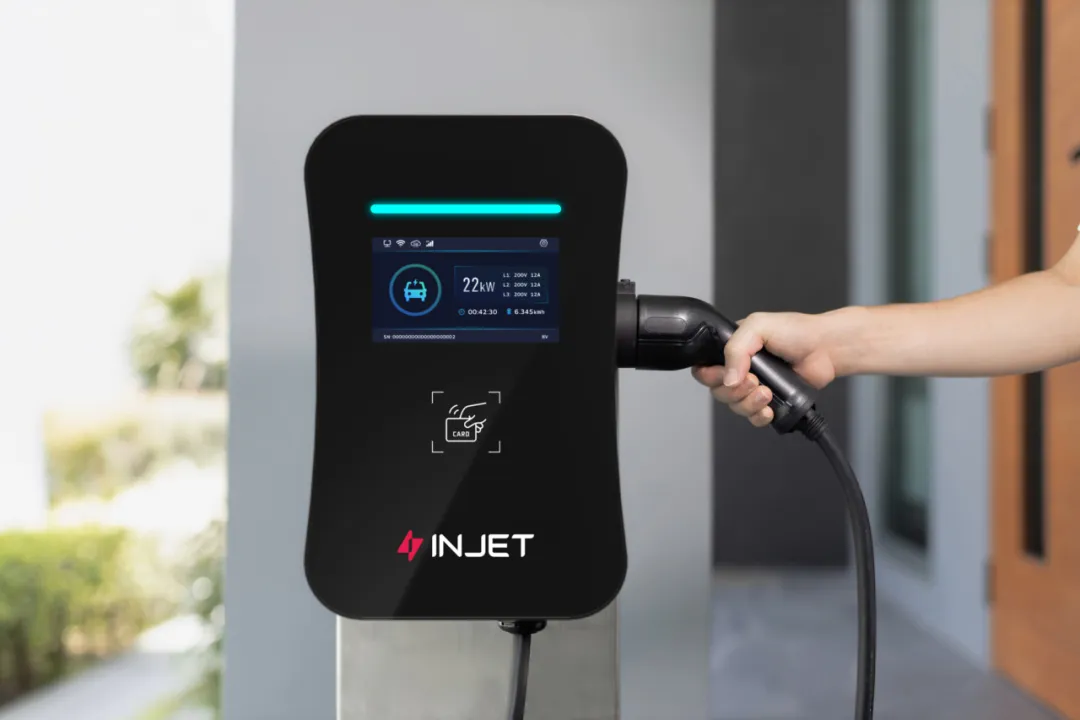Please feel free to contact us!
This article by 【INJET EV Research Lab】 aims to enhance your understanding of charging concepts by explaining its concepts and providing relevant information. This will help EV users make informed decisions when selecting suitable EV chargers and optimizing their charging strategies.
When talking about how quickly an EV replenishes its battery, two concepts need to be used: charging power and charging speed. These two concepts are intrinsically linked, but they are not interchangeable and cannot be confused. Let’s define them first:
Difference Between Power, Voltage, and Current
Definition 1:
Maximum Charging power, measured in kilowatts(kW),is the rate at which the energy is being transferred into an EV battery pack. You can imagine it to be like the rate at which the water flows through the hose.
It affects how quickly the battery charges: the higher the power, the quicker the vehicle will charge and the less time you will have to spend waiting for it to finish.
Definition 2:
Charging speed, measured in miles/h, km/h, it measures how many miles of range are added to the EV in one hour by the EV station/charger. You can imagine it to be like the amount of water that the barrel fills in an hour.
 (Injet Sonic AC EV Charger Floor-mounted)
(Injet Sonic AC EV Charger Floor-mounted)
We can take a closer look at how to calculate Charging Power:
Charging Power(P) = Voltage(V) × Current/Amperage(I)
· The Relationship Between Power, Voltage, and Current
To understand their relationship, think of voltage as the height difference in water that pushes electrons to flow. Current shows how strong that flow is, like the size of the water flow. Together, they determine how fast energy can be transferred.
The formula connecting them is simple: Power (P) = Voltage (V) × Current (I). This means that increasing voltage or current can increase charging power.
However, it’s usually safer to increase voltage instead of current. Too much current can make wires overheat and damage equipment. So, engineers balance voltage and current to keep charging efficient and safe.
· Factors Affecting Charging Power
Charging power of EV chargers directly affects how fast and efficiently vehicles charge, which is a key concern for users.
Let’s explore the key factors that impact charging power.
· Type of Charging Station
EV chargers are divided into Alternating Current(AC) and Direct Current (DC) chargers. AC chargers are lower power, suitable for home or office place charging, we also call them destination charging. While DC chargers are found in public places for fast charging, it’s also called on-the-go charging.
AC charger’s charging power normally ranges from 3 kW to 19.2 kW in North America, and up to 22kW in Europe, for anything over 11 kW, you will need a 3 phase electrical connection, which is not cheap to install, and the local electrical grid may not even be able to support it. But even a 7 kW charger is enough for an overnight charging for home use.
Users can choose based on their trip and battery level: use fast chargers when the battery is low and slow chargers at home for cost savings.
· EV Charging Capacity
Different electric vehicles have varying maximum charging powers due to design and battery management systems (BMS). Newer models often support high-power DC fast charging, while older ones may only handle lower power AC charging.
For example, if an electric car's BMS is set to a maximum charging power of 60kW, it means the vehicle can take in up to 60kW under ideal conditions. If you use a 30kW charging station, the charging speed will be limited by that station's output. Injet offers a variety of EV chargers with different power levels, so users can choose one that fits their needs and matches their vehicle for optimal charging efficiency.
· Temperature Conditions
Batteries work best within a certain temperature range. Extreme temperatures can affect performance and may cause the vehicle to limit charging speed to protect the battery.
It’s advisable to avoid high-power charging when the battery is hot and allow it to cool down first for safety.
In addition to these factors, the charging station’s max output, the EV ’ s battery state, and grid conditions are important too. Understanding these details helps users charge efficiently and maintain their vehicles for an overall better driving experience.
In today's fast-paced world, charging efficiency has become a crucial factor in evaluating user experience with electronic devices. Ongoing technological advancements have not only met users' demand for quick charging but also pushed the entire industry toward higher energy efficiency. In the following article, we'll dive into the charging power of different types of EV chargers. Stay tuned as we uncover the mysteries of the charging station realm and add momentum to green travel!



